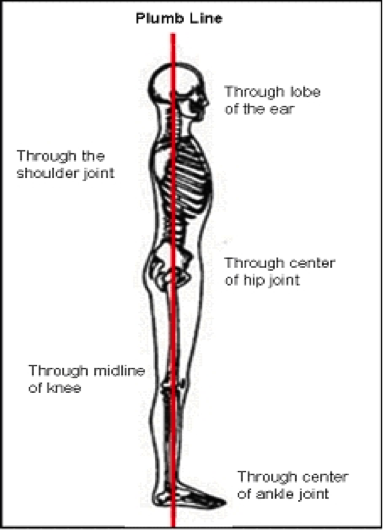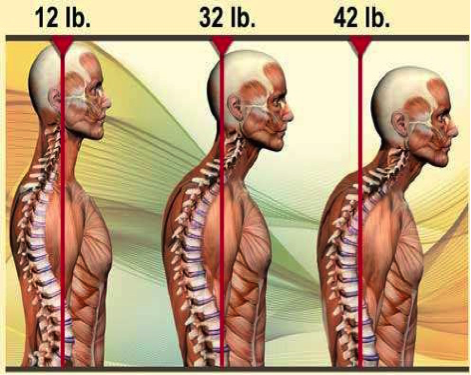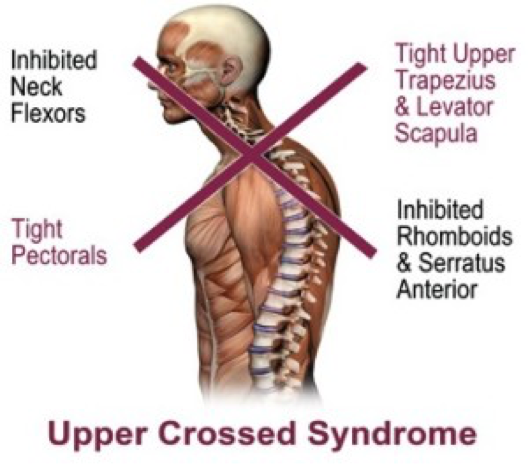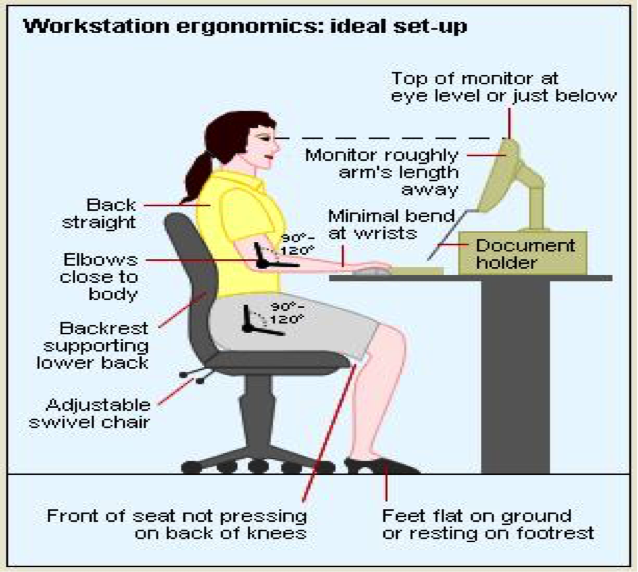Hello! My name is Anna Maria and I am a physiotherapy student at the University of Alberta. I recently completed my clinical placement at Pivotal Physiotherapy-Northgate with Lindsay Thompson. In this blog, I want to touch on the importance of good posture.
As a teenager growing up, I was constantly nagged by my mother who said things like “stop slouching” and “shoulders back.” At the time it was quite annoying, but as I progressed through my university career, I have realized how important good posture is for neck and shoulder health (mom is always right!).
What does good posture look like?
Ideal standing posture (viewed from the side) is a straight line that runs through the ear lobe, slightly in front of shoulder joint, center of the hip, midline of the knee and center of ankle joint (Figure 1.) ¹. This ideal posture leads to minimal stress/force applied at each joint ¹. When you stray from this posture due to poor postural habits, you can increase the forces applied to your joints and muscles; and over time, this can lead to pain and muscle dysfunction ¹. Take a look at figure 2. A forward head posture will cause our upper body muscles and bones to hold up an extra 30lbs of weight! I don’t know about you, but I can hardly hold a 30lb weight with both of my arms for an extended amount of time, let alone have my neck do that.
Figure 1

Figure 2

A common example of poor posture is slouching; this is caused by sitting or standing for prolonged periods of time. Many of us, for example, use computers and cell phones on a daily basis. These two activities require us to look down and in-front of ourselves making us bend through our upper backs and move our head/shoulders forward ². As a result, slouching can cause certain muscles to become tight, shortened and overused; and other muscles become weak, lengthened and inhibited ². This is commonly known as an upper crossed syndrome. In this slouched position, the over facilitated/tight muscles most commonly include the big muscles on the chest (pectoralis major/minor), and the group of muscles located on the back of the neck and upper back region (upper trapezius, levator scapulae and sub-occipital muscles)². On the other hand, the weakened muscles typically include the muscles located on the front of the neck (deep neck flexors), and the group of muscles located on the upper and mid back region (rhomboids, middle/lower trapezius and serratus anterior) ². This forms a “cross” and hence the name “upper crossed syndrome” (Figure 3).
Figure 3

Signs and symptoms of upper crossed syndrome
You may notice that you sit or stand with rounded upper back and shoulders while your head is more forward in comparison to the rest of your body. Secondly, you may feel restricted in neck and shoulder movement. For example, feeling tight when you shoulder check while driving or reach over head for objects. Finally, over time, you may have developed upper back and neck pain due to tightness of the muscles; and if left untreated, the pain has developed into tension headaches.
How can a physiotherapist help?
A physiotherapist will do a thorough assessment, which includes observing your posture from multiple angles, checking range of motion and strength of muscles, and palpating the tight muscles. Treatment may include specific postural stretches and strengthening exercises, manual therapy, a home exercise program, needling work and education.
Here’s a tip on how to set up your work station for best posture:
- Do not work for long periods of time, take frequent breaks
- Set up your computer monitor at eye level or just below
- Do not lean forward
- Ensure your feet are flat on ground; do not cross your feet
Figure 4

Anna Hepp MScPT student
References:
Magee, D, J. (2014). Orthopedic physical assessment (6th ed.). St. Louis, MO: Saunders.
Muscolino, J. (2015). Upper crossed syndrome. Journal of the Australian Traditional-Medicine Society, 21 (2), 80-85. http://eds.b.ebscohost.com.login.ezproxy.library.ualberta.ca/eds/pdfviewer/pdfviewer?sid=2de75d07-b891-4c13-9d09-aaf386564bd1%40sessionmgr106&vid=3&hid=127
[untitled photo of ideal posture]. Retrieved May 28, 2016 from http://www.dancepanorama.com/Uploads/Wordpress/2012/01/postureman2.jpg
[untitled photo of forward head posture]. Retrieved May 29, 2016 from http://www.bakerchiropractic.org/wp-content/uploads/2011/07/Forward-Head-Posture-Weight-of-Head.jpg
[untitled photo of upper cross syndrome]. Retrieved May 29, 2016 from http://www.totalfitnessexperience.com/wp-content/uploads/2013/02/upper-cross-syndrome-300×276.jpg
[untitled photo of ergonomic desk set up]. Retrieved May 29, 2016 from https://ugleepen.files.wordpress.com/2010/05/ergo-desk-set-up.jpg
